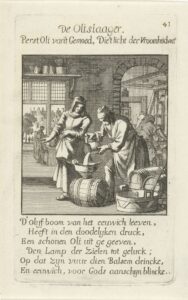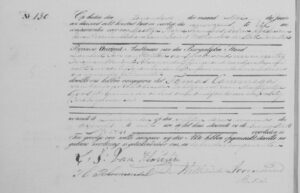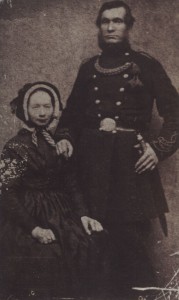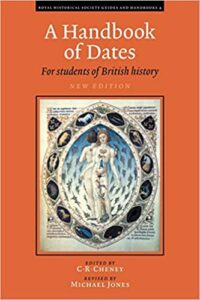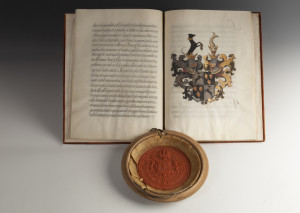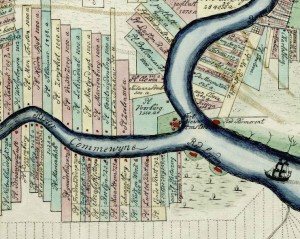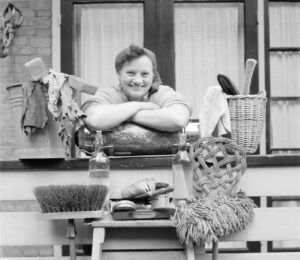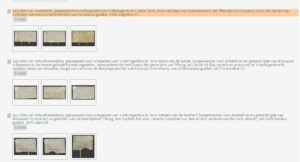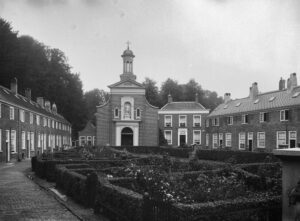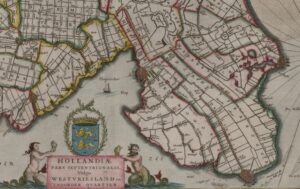An olieslager is an oil miller, someone who works in a mill that presses vegetable oil, for example from rapeseed. … [Read more...]
Unusual death place case study: Thomas Cammenga
When Thomas Cammenga died on 5 May 1842, he did not die in his place of residence, Leeuwarden in Friesland, but in Deventer, Overijssel. His death record showed he died at the Bagijnenstraat.1 Deventer was 120 km/75 miles from Leeuwarden. Whenever we notice something odd like this, we have to ask ourselves why: Why did Thomas die in Deventer even though he lived in Leeuwarden? Let's go through some of the common reasons why somebody died away from home: Jail. Leeuwarden had its … [Read more...]
Dutch term – Gepensioneerd
Gepensioneerd literally means "pensioned," having a pension ("pensioen"). In general use, it often means retired. Before say 1940, most jobs did not come with a pension after retirement. Government jobs, including the military, did often come with a pension. The pensioner would need to meet requirements for age and number of years in service. … [Read more...]
Quick tip – Handbook of dates
In the course of my Family and Local History studies at the University of Dundee, I purchased a recommended book: C.R. Cheney, ed., A Handbook of Dates for Students of British History, revised (Cambridge: Cambridge University Press, 2004). While the title indicates it is meant for students of British history, most of the content is usable in the Netherlands too. Some of the topics I find especially useful for research in the Netherlands are: French Republican calendar, with the names of … [Read more...]
Dutch term – Zegel
A zegel is a seal or stamp. In the Middle Ages, it became customary to attach a seal to charters as marks of identity and authority. Originally, seals would often show knights on horses. In the 1100s, this was gradually replaced by coats of arms. The following image shows a combination: Duke John II of Brabant is displayed as a knight on his horse, with his coat of arms on his shield, banner, and horse mantling. For examples of medieval seals, see the earliest generations in my Eleanor of … [Read more...]
Dutch Genealogy News for January 2023
This is an overview of the new sources, websites, projects and other news that was announced last month. Sources Birth, marriage, and death records of the country of Suriname have been scanned. They can be consulted on the National Archives of Suriname website. The civil registration only includes free people. Slavery was abolished in Suriname in 1863 so from then on, the registration includes the entire population. Notarial records of Delft have been scanned and partially indexed. They … [Read more...]
Dutch term – Huisvrouw
Huisvrouw means housewife. Originally, the term was generically used for wife or goodwife. This could include women who had occupations, like midwives or laundresses. In the 1900s, the term shifted to mean a woman who did not work outside the home, including stay-at-home mothers. … [Read more...]
Quick tip – Search finding aids as well as indexes
Archives have different types of information on their website. The genealogical indexes are often found in a different section than the finding aids with the archival descriptions or catalogs. These descripts are often quite generic and describe whole series, like minutes of court records, incoming correspondence, or tax records. If you are lucky, the archival descriptions in the finding aids will also include names of people. Some archivists have made the effort to add the names of parties to … [Read more...]
Dutch term – Begijn
A begijn is a beguine. Beguines were single women who lived in communities together. The beguine movement started in the 1100s and spread across Western Europe. Initially, beguines lived in houses together, but over time, they often lived in individual houses around a courtyard. Beguines were deeply religious women who often dedicated their lives to serving the community, like taking care of the ill or elderly. Unlike nuns, they did not have to renounce their personal possessions, but the … [Read more...]
Five Ways to Identify Old Places Names in the Netherlands
When you come across a place of origin in a records, you may not be able to find that town on a modern map. Spellings and names changed. Here are five strategies to find out what place is meant. 1: Check contemporary maps You can look at a map from the period, like in the world atlas by Blaeu from 1665. This shows you the names the towns had in the 1600s. Many people did not move that far so I start by looking at a map of the area where the record was created that mentioned the town. I widen … [Read more...]
